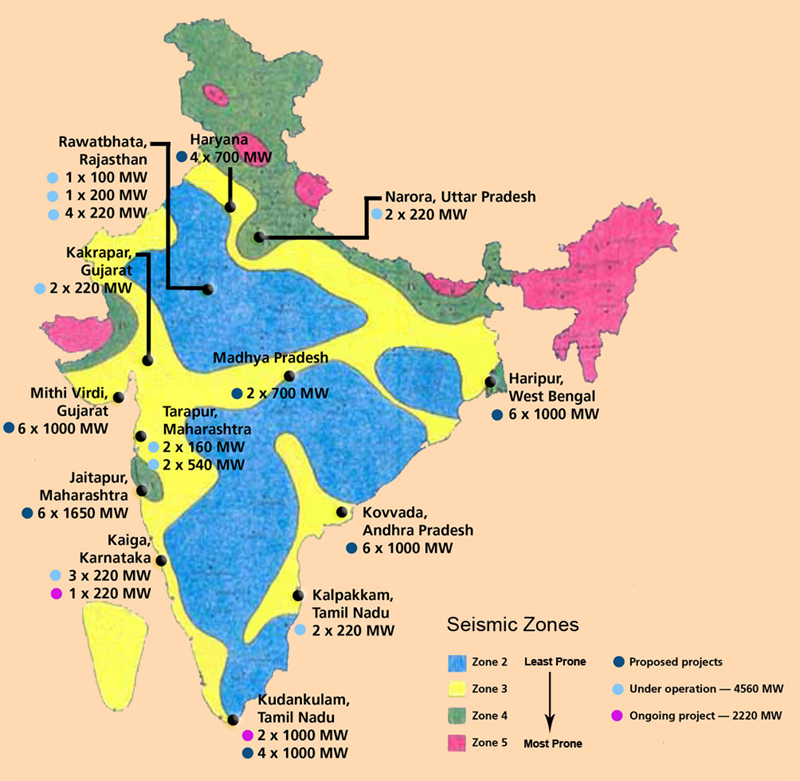- Courses
- GS Full Course 1 Year
- GS Full Course 2 Year
- GS Full Course 3 Year
- GS Full Course Till Selection
- MEP (Mains Enrichment Programme) Data, Facts
- Essay Target – 150+ Marks
- Online Program
- GS Recorded Course
- NCERT- First Ladder
- Polity
- Geography
- Economy
- Ancient, Medieval and Art & Culture AMAC
- Modern India, Post Independence & World History
- Environment
- Governance
- Science & Technology
- International Relations and Internal Security
- Disaster Management
- Ethics
- Current Affairs
- Indian Society and Social Issue
- CSAT
- 5 LAYERED ARJUNA Mentorship
- Public Administration Optional
- ABOUT US
- OUR TOPPERS
- TEST SERIES
- FREE STUDY MATERIAL
- VIDEOS
- CONTACT US
REVOLUTIONIZE INDIA’S NUCLEAR ENERGY SECTOR WITH PRIVATE INVESTMENT
REVOLUTIONIZE INDIA’S NUCLEAR ENERGY SECTOR WITH PRIVATE INVESTMENT
27-02-2024
- India plans to transform its nuclear energy industry by inviting private companies to invest around USD 26 billion, signifying a major change in its energy strategy.
- Alignment with Energy Goals: India targets raising its non-fossil fuel electricity generation capacity to 50% by 2030, from the current 42%.
- Private investment in nuclear power will significantly aid in achieving this goal, advancing the nation's transition to cleaner energy.
- Government Negotiations: Leading companies like Reliance Industries, Tata Power, Adani Power, and Vedanta Ltd. are in talks with the government.
- Impact and Targets: The government aims to add 11,000 megawatts (MW) of new nuclear power capacity by 2040 through this initiative.
- It is expected to diversify India's energy sources, reduce reliance on fossil fuels, and improve long-term energy security.
-
Implementation of Investment Plan
- Private companies will invest in nuclear plants, acquire land and water, and conduct construction.
- However, state-run Nuclear Power Corporation of India Ltd. (NPCIL) will retain rights for building, operating, and managing nuclear stations and fuel management.
- Private companies expect revenue from electricity sales, while NPCIL will operate the projects for a fee.
India’s Nuclear Power Sector
- Nuclear energy is produced by splitting atoms in a reactor to heat water and generate electricity.
- Compared to other renewables, it has advantages like smaller land use and less waste.
- India is the only developing nation with its own indigenous nuclear reactors for electricity generation.
- Nuclear Energy in India: India is 3rd globally in electricity production, with nuclear power as the 5th-largest source. India has over 22 reactors across 7 plants, producing around 6800 MW of nuclear power.
- Current Energy Landscape: India's total installed power capacity is currently 428 GW and is projected to double to 810 GW by 2030. Nuclear power contributes about 3% to India’s overall energy mix.
- India aims to increase nuclear power contribution from 3.2% to 5% by 2031.
- 11 nuclear power plants are under construction, with plans to add 8,700 MW of capacity.
- This includes a Prototype Fast Breeder Reactor (PFBR) and 4 Pressurized Water Reactors (PWRs) using Russian technology.
- A Fast Breeder Reactor (FBR) is a nuclear reactor that uses fast neutron to generate more nuclear fuels than they consume while generating power.
- A pressurized water reactor (PWR) is a type of light-water nuclear reactor that is used to generate electricity and power nuclear submarines.
- PWRs are the most common type of nuclear power reactor in the world, making up the majority of the world's nuclear power plants.
- A pressurized heavy-water reactor (PHWR) is a nuclear reactor that uses heavy water as a coolant and neutron moderator. PHWRs often use natural uranium as fuel, but may also use very low enriched uranium.
- The government has approved the construction of 10 indigenous Pressurized Heavy Water Reactors (PHWRs) of 700 MW each, with a goal of substantial capacity expansion by 2031.

- Nuclear Energy Resources in India: India has a small uranium but significant thorium resource. Both have specific uses in reactors, though thorium needs additional processing before use.
- In 2022-23, India plans to import 100 tonnes of natural uranium, with existing agreements in place with Canada, Kazakhstan, Russia, and Uzbekistan for uranium purchases.
- Nuclear Power Reactors of India: The largest indigenous 700 MWe Kakrapar Nuclear Power Plant Unit-3 in Gujarat is now fully operational.
- India plans to build 12 new nuclear power reactors by 2024.
- Reactors under IAEA safeguards: India's 14 nuclear reactors are under IAEA safeguards due to their use of imported fuel.
- India's Three-stage Nuclear Power Programme: Dr. Homi Bhabha designed India's three-stage nuclear power programme in the 1950s.
- The program aims to secure long-term energy independence using uranium and thorium reserves from South India's coastal monazite sands.
- India is currently in the second stage of its nuclear program, aiming to utilize thorium reserves for energy production.
- NITI Aayog suggests focusing on small modular reactors with private investment to address energy needs and replace aging thermal power plants.
-
Stage 1: Natural Uranium Fuelled Pressurized Heavy Water Reactors (PHWRs)
- Initially, natural uranium fuelled Pressurized Heavy Water Reactors (PHWRs) were used. These reactors produced electricity and plutonium-239 as a byproduct.
- The second stage would also use the produced plutonium-239.
- Reasons for Selecting PHWRs:
- Use of natural uranium as fuel.
- Optimal utilization of mined uranium for energy.
- Aims for complete self-sufficiency in technology.
-
Stage 2: Fast Breeder Reactors (FBRs) Utilizing Plutonium-Based Fuel
- The second stage involves utilizing plutonium-239 to create mixed-oxide fuel for Fast Breeder Reactors (FBRs).
- Thorium will be used once enough plutonium-239 is available to produce uranium-233. This uranium is vital for the third stage.
-
Stage 3: Advanced Nuclear Power Systems for Utilization of Thorium
- Stage 3 aims for a long-term nuclear fuel cycle.
- Advanced nuclear systems would combine thorium and uranium-233.
- Utilizing India's abundant thorium through thermal breeder reactors.
- This stage is currently in the research phase.
-
Key Players and Regulatory Environment
- The Department of Atomic Energy (DAE), the Nuclear Power Corporation of India (NPCIL), and the National Thermal Power Corporation (NTPC) are crucial organizations in India's nuclear energy sector.
- All three are under the Union government's control.
- NPCIL operates all nuclear power plants (except PFBR variants owned by The Indira Gandhi Centre for Atomic Research) and handles nuclear business in India.
- NTPC, a major coal electricity producer with 70GW capacity, aims to incorporate nuclear reactors in its strategy to replace old coal plants.
- The Atomic Energy Regulatory Board (AERB) supervises nuclear safety and regulations, including site selection, construction, operation, and decommissioning.
- AERB's authority extends to nuclear applications in various sectors.
- Nuclear Liability and Insurance: India joined the Convention on Supplementary Compensation for Nuclear Damage (CSC) in 2016, establishing a global compensation system for nuclear accidents.
- The Civil Liability for Nuclear Damage Act (CLND), 2010, sets operator liabilities and requires insurance for potential damages.
- The Indian Nuclear Insurance Pool (INIP), supported by General Insurance Corporation of India (GIC-Re) and other insurers, offers USD 15 billion coverage for supplier liability claims.
-
Foreign Investment and Regulation:
- India's FDI policy prohibits foreign investment in the atomic energy sector.
- However, there's no restriction on FDI in manufacturing nuclear equipment and parts for power plants.
- India's Atomic Energy Act 1962 governs the nuclear energy subject, with the government playing a vital role in facility development, operation, and decommissioning.
- A NITI Aayog panel recently recommended allowing FDI in India's atomic sector.
-
Opportunities for expansion in Nuclear Energy Sector
- India plans to increase the share of nuclear power from 3% to 9-10% in its energy mix in long term.
- The nuclear sector offers chances for foreign and private companies, particularly in non-nuclear parts of power plants and in construction and services.
- Small Modular Reactors (SMRs) offer potential for cost-saving and reduced construction time, along with opportunities for technology sharing and partnerships.
- Nuclear energy could aid in producing green hydrogen and decarbonizing the transportation sector, supporting clean power for electric vehicles and hydrogen fuel cells.
- As old coal plants are phased out, nuclear power will be vital in meeting India's growing energy needs and fulfilling its clean energy objectives.
-
Challenges in India's Nuclear Power Sector
- Safety and Security Standards: India's nuclear power plants face criticism for inadequate safety and security measures during natural or human-made disasters.
- Concerns include radioactive contamination, climate impact, and leaks affecting workers' health and the environment.
- For example, the Kudankulam Nuclear Power Plant in Tamil Nadu and the Kaiga Nuclear Power Plant in Karnataka faced these issues.
- Nuclear Waste Management: India lacks a comprehensive plan for handling and disposing of nuclear waste. Insufficient storage and transportation facilities for radioactive materials are other issues.
- Land Acquisition: Difficulty in acquiring land for nuclear power plants causes project delays, seen in instances like Kudankulam (Tamil Nadu) and Kovvada (Andhra Pradesh).
- Lack of Public Funding: Nuclear power receives less government support compared to fossil fuels and renewable energy sources. Limited subsidies make nuclear energy less competitive in the energy market.



